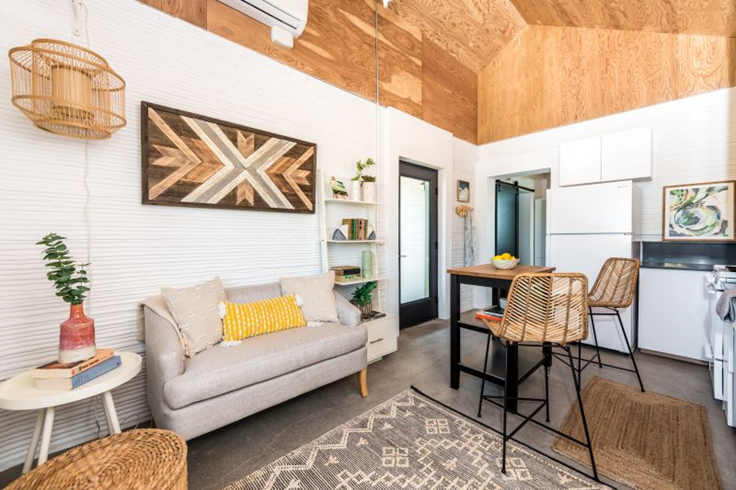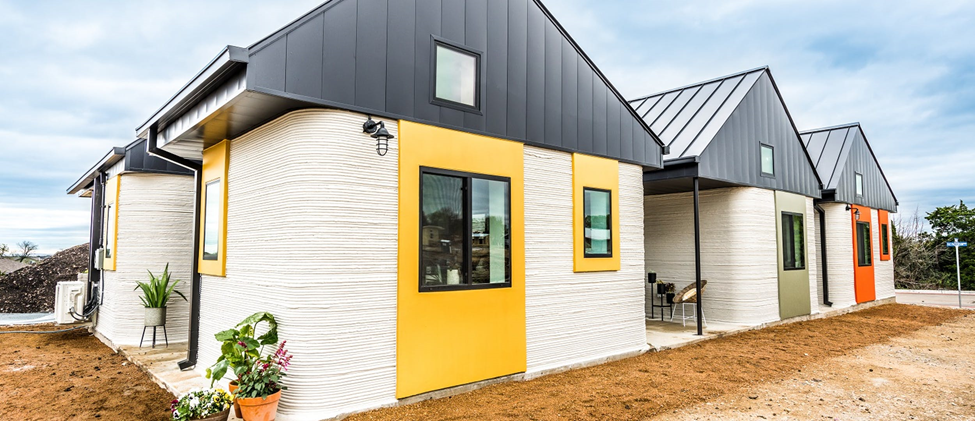
Charles Goulding Jr. considers the potential for 3D printing construction to aid in the affordable housing crisis.
Housing First
When misfortune strikes, it tends to compound. Most pernicious is the way housing and health challenges intertwine. A health problem can suddenly make housing unaffordable, and the loss of adequate shelter can severely exacerbate a health issue.
Supportive housing programs provide an integrated approach to life challenges, combining shelter with mental and physical health services as necessary.
For these programs to work, as they have in American cities like Columbus and throughout Europe, access to shelters must be extremely low barrier. So, too, must be access to supportive housing and affordable housing options that follow. These options provide the substantive and lasting support needed to reverse a negative spiral.
The Modern Housing Crisis
As research has coalesced around housing first models of support, America’s low-cost housing stock has continued to decline.
In the 1950s, cities like New York had a plethora of single-room occupancies (SROs). These rooms provided shelter to a host of citizens who might otherwise have gone unhoused.
From 1960 to 1978, however, New York City SROs declined from 129,000 to 25,000. Other cities saw similar declines. The cause? Changes to housing and tax codes favoring higher-rent dwellings and disfavoring abatements for affordable housing projects.
Unsurprisingly, the housing stock decrease resulted in an explosion of the unhoused. In New York, San Francisco, Chicago, and elsewhere, thousands appeared sleeping in parks, on sidewalks, and inside transportation hubs. The modern housing crisis was born.
A New Generation of Supportive Housing Developments
Not every supportive housing community is, or ought to be, a high-density SRO such as a converted hotel. One problem with such buildings is susceptibility to disease. For that very reason, homeless shelters were potential hotbeds of contagion during the COVID-19 pandemic, forcing facilities to limit intake.
Low-cost housing developments outside of city centers may instead be the way of the future. These projects provide the sense of community integral to the supportive housing model while providing an added measure of both privacy and social distance.
Help From 3D Printing
In 2016, 3D printing firm ICON began building a housing development for the homeless in Austin, Texas. Once completed, it is expected to host 480 individuals, or half of Austin’s chronically unhoused.
The village, named Community First!, rests on 51 acres. Each of its 400-square-foot homes includes one bedroom, one bath, a full kitchen, living room and a large porch with a sunset view.
“I see this innovative idea as being a powerful piece of the puzzle, along with other ideas of what it’s going to take to have more affordably built houses,” said Alan Graham, founder of Mobile Leaves and Fishes, ICON’s collaborator on the Austin project.

A key advantage of 3D printing, and a reason other such communities may follow, is cost. Whether in Long Island or in Texas, the cost of construction of such 3D printed homes is materially cheaper than that of traditional construction.
Another advantage is sustainability. The planned community in Rancho Mirage, California, for example, boasts a host of environmental advantages, starting with an innovative light stone building material that replaces timber construction.
More Challenges and More Opportunity to Come
A spike in the unhoused has followed the COVID-19 outbreak. Yet even before the pandemic, stagnant wages and rising home/healthcare costs were already cause for severe housing crises across the country.
Single unit housing developments and planned communities are the way of the future. These projects are cheaper, more sustainable, and more innovative with 3D printing. And they are a perfect fit for the supportive housing programs that effectively address profound life challenges. If the country is to address its housing crisis – as it must – the 3D printing home industry should take note.
